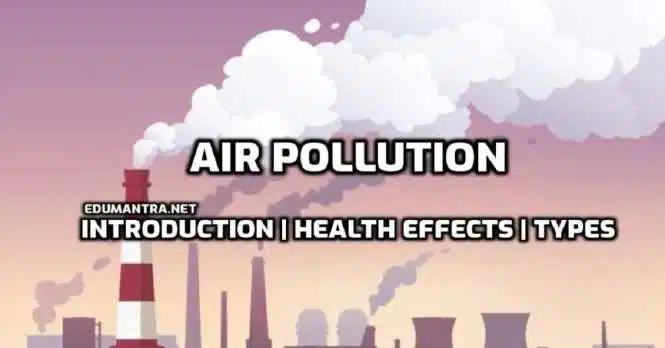
Introduction – Air Pollution: A Silent Killer
Air pollution is a silent killer. It is hazardous to our health and it poses one of the greatest environmental risks to human society. This is because air pollution(a paragraph on air pollution) has the potential to affect all parts of the environment, including people, plants, animals, and buildings. Though air pollution can only be seen with specialized equipment, it remains a risk that needs to be addressed on both a national and international level.
What is air pollution?
Air pollution is a type of environmental pollution that occurs when harmful or poisonous gases are released into the atmosphere. These gases can come from a variety of sources, including factories, power plants, cars, and airplanes. Air pollution can cause a variety of health problems, including respiratory infections, headaches, and heart disease. It can also contribute to climate change.
What are the health effects of air pollution?
Air pollution(paragraph on air pollution) is a serious problem that can have a number of negative health effects. These effects can range from mild to severe, and in some cases, they can even be fatal. Some of the most common health problems caused by air pollution include respiratory infections, asthma, heart disease, and cancer.
Who are at risk for high levels of air pollution?

There are many groups of people who are at an increased risk for developing health problems from exposure to air pollution. These groups include infants, children, the elderly, pregnant women, and people with pre-existing respiratory or heart conditions. People who work or exercise outdoors are also at an increased risk.
Many people think of air pollution as something that only affects people in large cities. However, air pollution can be found in any community, no matter how rural it is. In fact, according to the American Lung Association, nearly half of all Americans live in areas with unhealthy levels of air pollution.
So who is most at risk for high levels of air pollution? Children, the elderly, and people with lung diseases such as asthma are particularly vulnerable. That’s because their bodies are still developing or their respiratory systems are weaker and not able to filter out pollutants as effectively. People who work or exercise outdoors also may be exposed to higher levels of air pollution.
How do we fix air pollution problems?
- There are a number of ways to reduce air pollution, both on an individual and community level. Here are some things you can do to help make a difference:
- Reduce your reliance on fossil fuels. Drive less, carpool, use public transportation, or switch to a more fuel-efficient vehicle.
- Install solar panels or wind turbines.
- Support businesses that are environmentally friendly and sustainable.
- Encourage your local government to invest in clean energy sources and green infrastructure projects.
- Educate yourself and others about the dangers of air pollution and ways to reduce its impact.
Different types of air pollution
There are many different types of air pollution, each with its own unique set of health risks. Some of the most common types of air pollution include:
1. Ground-level ozone pollution: This type of pollution is created when emissions from cars and other engines react with the sunlight. Ground-level ozone can cause respiratory problems, including coughing, chest pain, and difficulty breathing.
2. Particulate matter pollution: This type of air pollution is made up of tiny particles that can enter your lungs and cause respiratory problems. Particulate matter pollution can come from a variety of sources, including power plants, construction sites, and forest fires.
3. Sulfur dioxide pollution: This type of air pollution is emitted by power plants and factories that burn coal or oil. Sulfur dioxide can irritate the respiratory system and worsen conditions like asthma and bronchitis.
4. Nitrogen oxide pollution: This type of air pollution is produced by cars and trucks when they burn fossil fuels. Nitrogen oxide can contribute to ground-level ozone formation and also cause respiratory problems on its own.
Conclusion
Air pollution is a problem that we can no longer afford to ignore. The silent killer has claimed the lives of too many innocent people, and it is time for us to take action. We need to do our part to reduce air pollution by using less fossil fuels, driving less, and planting more trees. We also need to hold our government accountable for their inaction on this issue. Only by working together can we hope to make a difference.